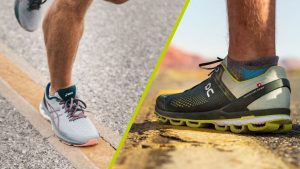Trail running can be a great way to stay in shape and enjoy the outdoors at the same time. If you’re just getting started with trail running, or if you want to improve your skills, then this is the guide for you! We will cover everything from what gear and clothes are best (hint: it’s all about layers!), how to train for your first run, and where to find some great trails near you. There’s something here for everyone
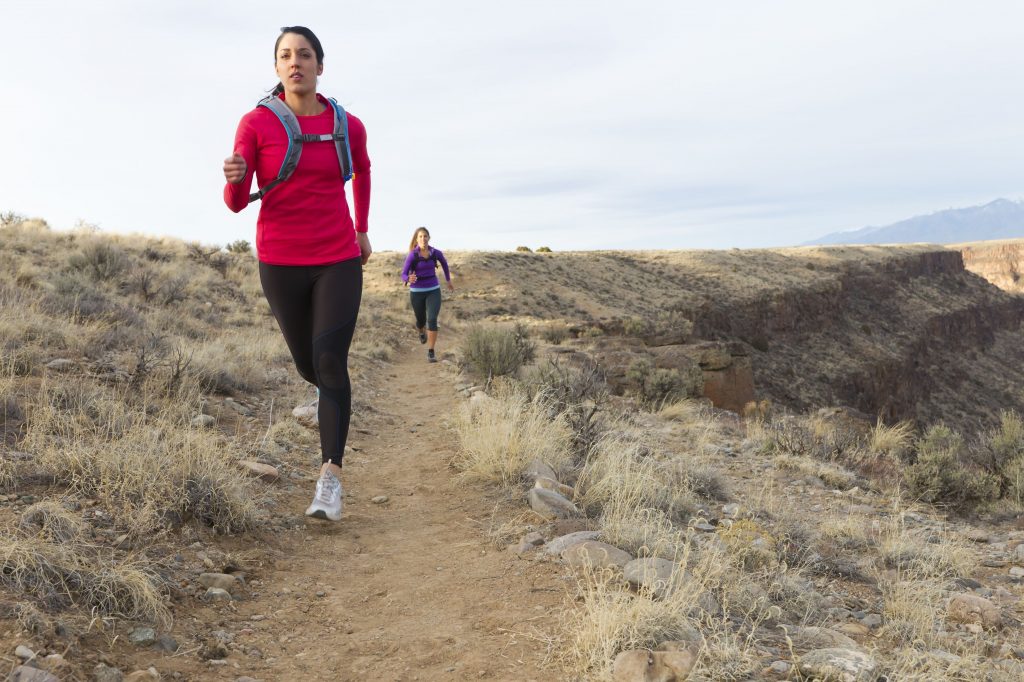
Table of Contents
First Steps to Help You Plan Your First Trail Running Experience
- Find the right trail running shoes: While you can use traditional running shoes, trail runners have a sole that grips the ground better and helps prevent slipping.
- Gear up: Make sure to have the right clothing, including layers that are worn in stages. You should also consider gloves and a hat for cold-weather runs.
- Train your body: Find out what kind of training is best suited for you whether it be distance or speed work, tempo intervals, or long slow miles. Then make sure to incorporate these activities
- Find the right trail for you: This includes considering where to run, what time of day, and how long your runs should be
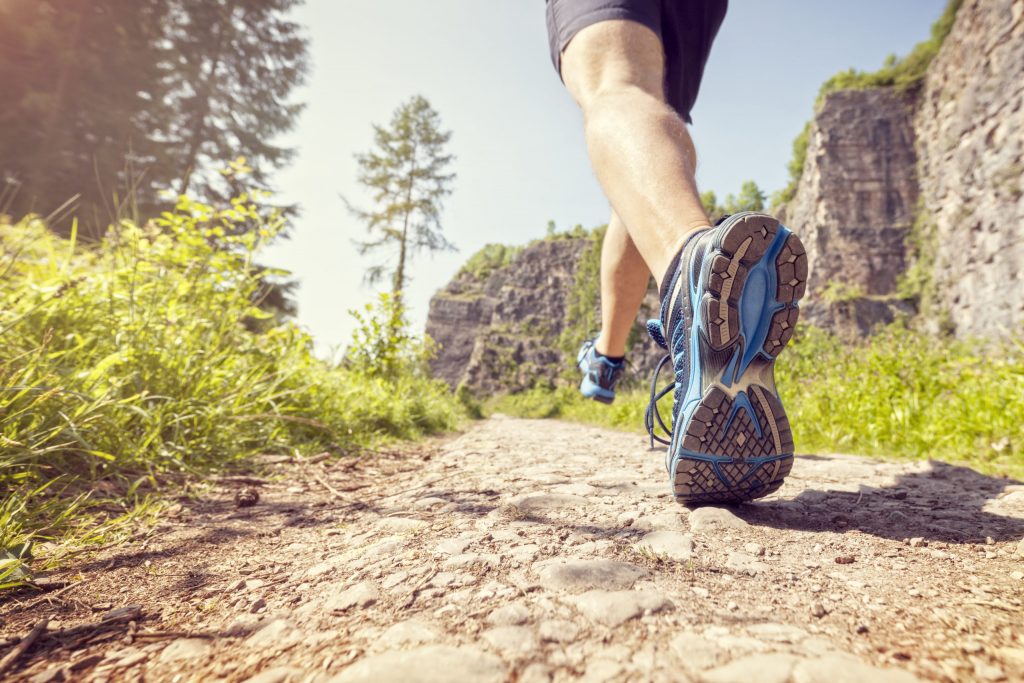
Find the Right Shoes
For trail running shoes, you will need to look for a shoe with enough grip and traction so that it does not slip on the trails. If the sole is too soft or too thin, then there is a chance of your foot slipping as you run which can lead to injury (including sprains).
Many people find that traditional running shoes work just fine for trail running, but if you ever plan on exploring different terrains or going longer distances then it is a good idea to invest in a pair of shoes designed specifically for the trails.
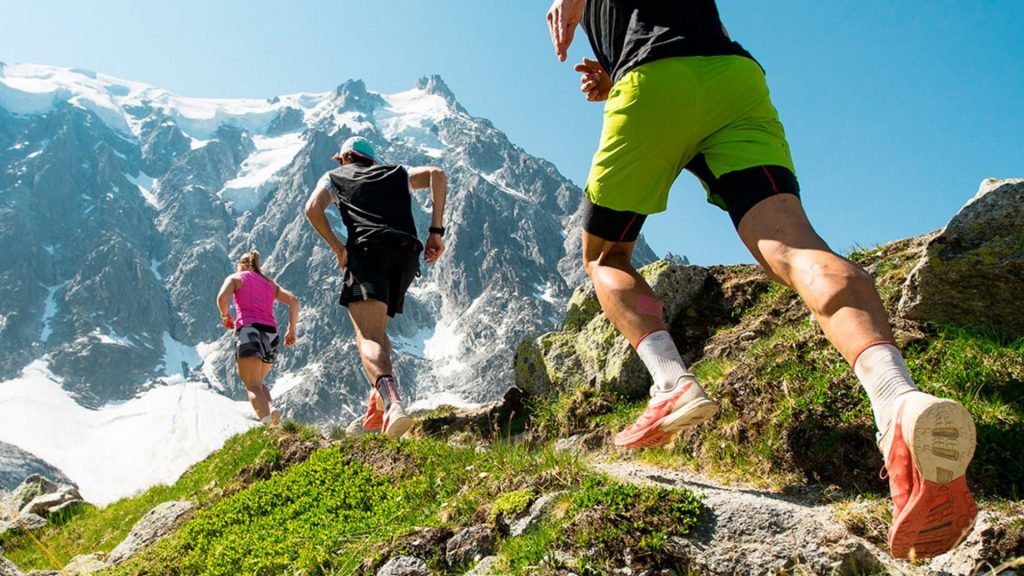
Gear Up: What Should I Wear?
Being prepared and having all of your gear before you go out can make your experience much more enjoyable and safe.
The right clothing is essential whether you’re doing an easy five-mile run or a long thirty miler through uneven terrain so make sure to dress for the occasion.
It’s always best to wear layers that can be added or removed depending on how hot or cold it gets while running, but here are some basics:
- A wicking base layer to keep you cool and dry
- A warm, insulating top (you can remove this as your run heats up)
- Some form of wind protection is like a raincoat if it is expected to be cold or rainy. Make sure that you also bring some sort of waterproof shell in case of the weather changes quickly
- A hat and gloves if you’re running on a cold morning
While many trail runners choose to wear shorts, it is important to consider the conditions of the run as well as your own personal preferences. It may be best to run in pants (especially when doing longer runs) since they can protect against scrapes and thorns along with providing more warmth. However, wearing pants that are too long can get caught under your feet or shoes which will lead to tripping so it’s best to find a balance between the two.
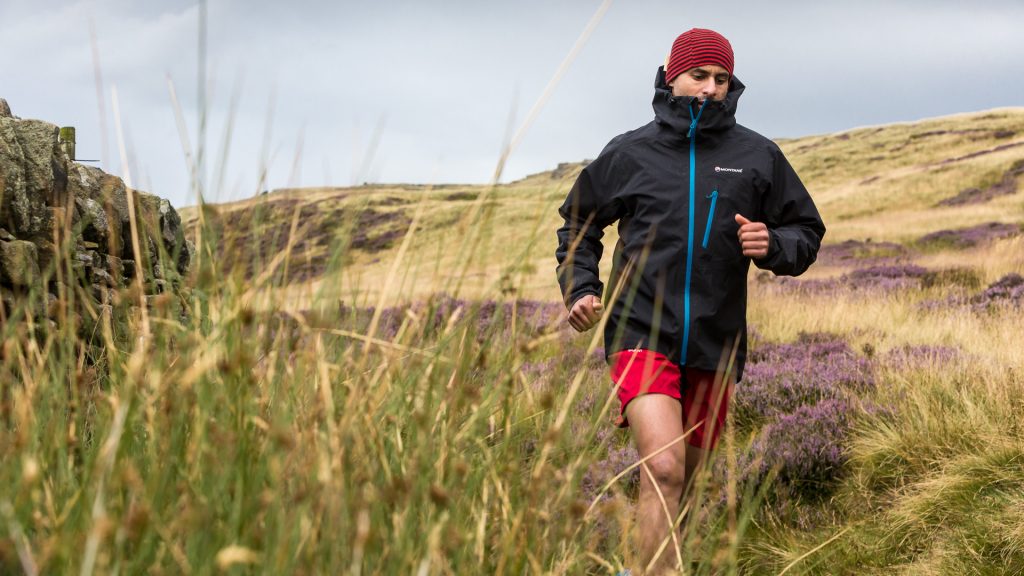
Water and Nutrition
As with any kind of running, it is important to make sure that you are staying hydrated. You should also carry some form of nutrition in case your run is longer than expected or if you’re doing a harder workout on the trails.
If you are just starting out, then it is important to experiment with different foods and liquids while running. You want something that will provide enough energy but isn’t too heavy in case your stomach doesn’t agree. Look for options like gels or chews which can be easily consumed during a run without having to stop to eat.

Training for Your First Trail Run: How Should I Train?
There are many types of training you should consider when getting ready for your first trail run including speedwork, tempo intervals, and long slow miles.
Speedwork: This type of training is perfect for those who want to improve their overall speed and endurance on the trails by increasing their turnover (pace) while running hills or inclines as well as doing sprints at set distances such as 200 meters or 400 meters. These types of workouts should only be done by those who are very fit and used to running at a faster pace.
Tempo Intervals: If you want to get in shape for your first trail run, then tempo intervals should be part of your routine since they improve cardiovascular fitness while also strengthening the muscles needed for long-distance trails. These types of interval training workouts involve alternating between a comfortable pace and a slightly faster one. The length of the intervals should be between ten to twelve minutes with about thirty second recovery periods in-between.
Long Slow Miles: These types of training runs are perfect for those who want to simply build up their distance and endurance on the trails since they can last anywhere from forty-five minutes to an hour or more. This is a great way to slowly build up your mileage for when you want to do longer runs in the future without taking much time off from being on trails since these training sessions aren’t as intense and will not result in overuse injuries or exhaustion if done too often.
It’s also important that you strengthen all of the muscles used while trail running, including your calves which are used for hills and uneven terrain as well as the hamstrings that provide stability.
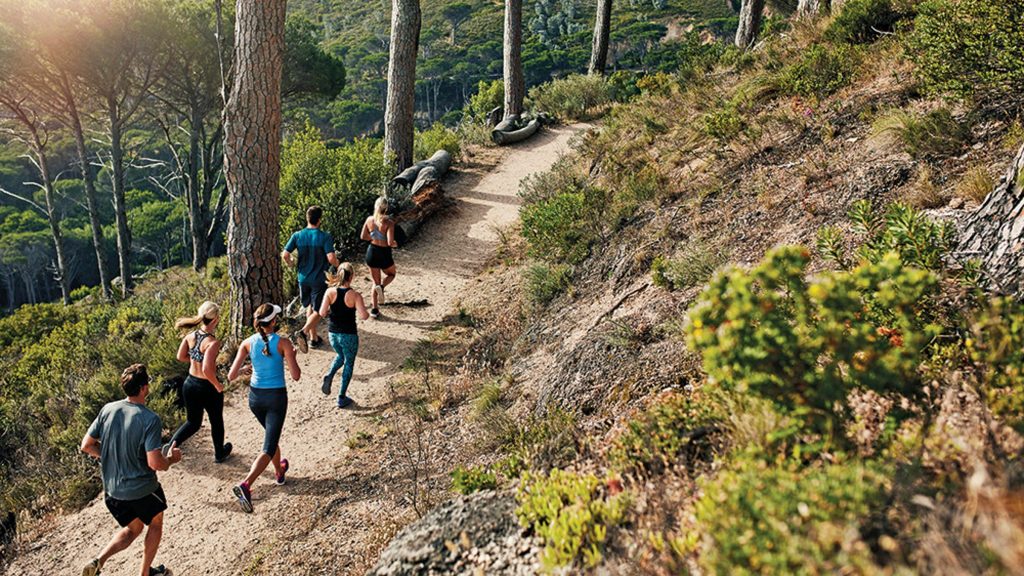
Hill Training: If you live in an area where there aren’t many trails or hilly areas available to train on then make sure to incorporate some hill training into your routine by simply doing intervals on a treadmill at different incline levels.
Hamstring Curls: This simple exercise can be done using a resistance band or tubing and simply involves sitting on the floor with your legs straight out in front of you while looping either one end or both ends of the tube around each foot to secure it in place. You will then slowly curl your feet up towards your glutes while keeping your legs as straight as possible. This should be repeated for twenty to thirty reps with a short break in-between each set.
It’s also important that you consider the terrain of where you are running on, including whether or not it will include rocks and roots which can be very difficult even for those who have been trail running regularly since they will likely cause scrapes and falls if you don’t watch your step.
Wearing supportive running shoes is also essential for protecting yourself against injuries since they provide the stability needed to handle any type of terrain, especially when it’s uneven or rocky. It may take some time before finding a pair that is perfect for you but once you do make sure to stick with them since they are the best way possible to prevent blisters, sprains, and other types of injuries.
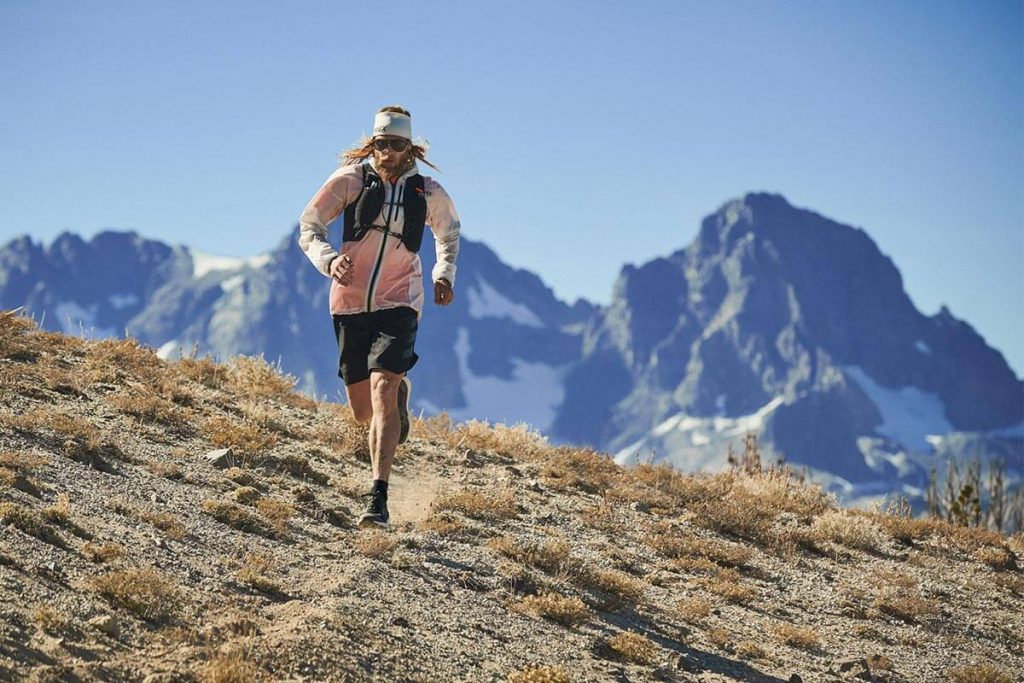
Work on Your Technique
You should also consider working on your technique since it will allow you to move more efficiently around obstacles while trail running. Making sure that you are landing underneath your hips, keeping a slight bend in the knees, and not leaning back too far all help make this possible which is why good form is essential for staying injury-free as well as progressing at a healthy pace while trail running.
If you want to get in shape for your first trail run, then tempo intervals should be part of your routine since they improve cardiovascular fitness while also strengthening the muscles needed for long-distance trails. These types of interval training workouts involve alternating between a comfortable pace and a slightly faster one. The length of the intervals should be between ten to twelve minutes with about thirty second recovery periods in-between.
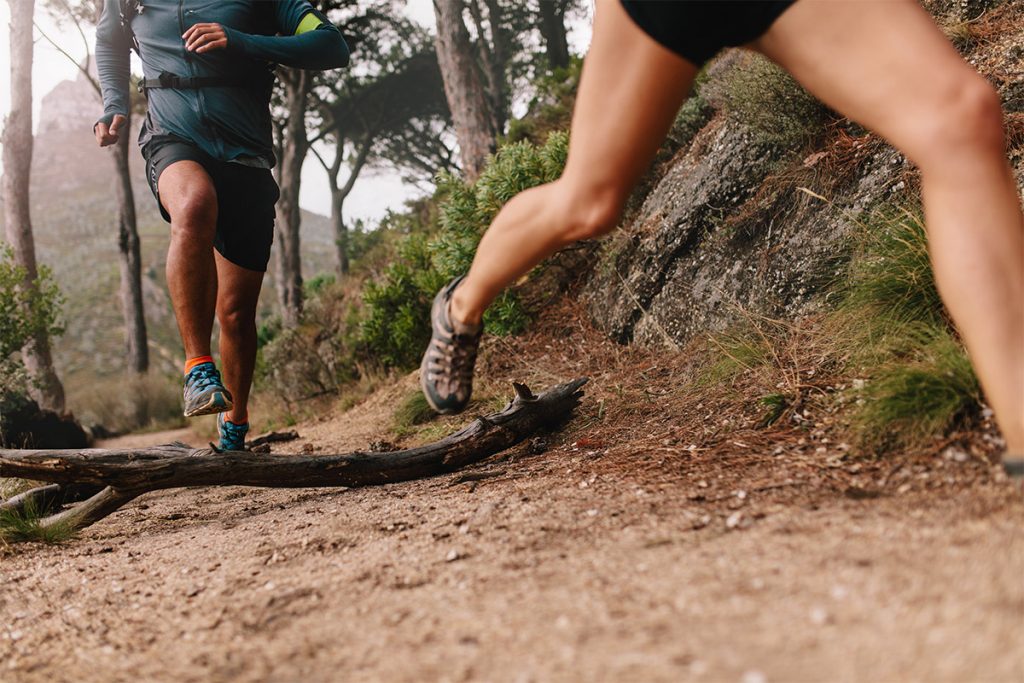
Basic Trail-Running Technique
- Lean forward from your ankles, not your waist. This will help you maintain balance and propel yourself up hills.
- Keep a steady breathing pattern, but don’t go too fast because it’s hard to breathe when you are panting.
- If running with people who have more experience on trails than you do, listen carefully to their advice.
- Keep your eyes on the trail in front of you, not looking down at your feet.-Stay relaxed, and avoid tensing up or clenching muscles to prevent cramping later on during a run.
- If running with people who have more experience on trails than you do, listen carefully to their advice.
- Keep your eyes on the trail in front of you, not looking down at your feet. Stay relaxed, and avoid tensing up or clenching muscles to prevent cramping later on during a run.
- Doing intervals and hill training at least once per week is also a great way to improve endurance, speed, and strength while trail running whereas including some tempo work into the mix will help you build cardiovascular fitness over time.
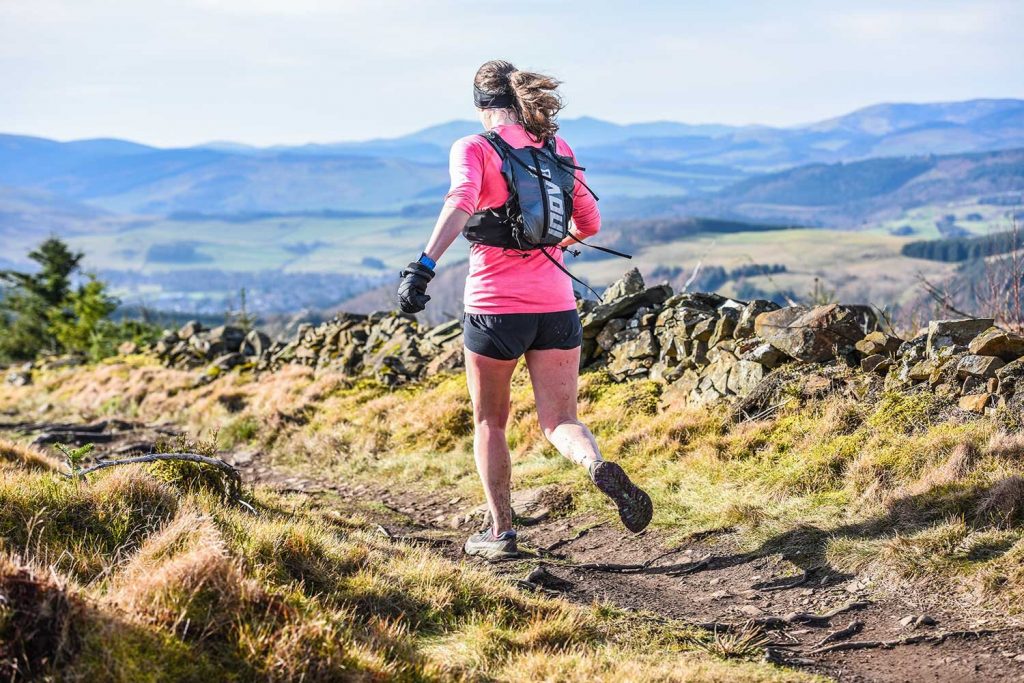
Final Preparation: Decide Where to Trail Run
Before you head out on your run, it is important to have a plan. While running trails can be more spontaneous and fun than hitting the same route every day, there are some things that need to be considered:
- Where will you go? It’s best to find an area with well-marked routes or signs so that you don’t get lost.
- What time of day will you be running? This can depend on how hot or cold it is as well as the trails that are available. If you’re not sure, then try to pick an area with plenty of different options so that if one route isn’t ideal for your run, there might be another close by
- How long do you plan to run for? Whether you’re doing a short interval workout or going out on an endurance training session, it’s important to have a rough idea of how long your route should be. This will make sure that you are able to get back before dark and also prevent any serious injuries
- How difficult is the terrain? If this will be your first time running trails then it’s best to choose an area with relatively easy terrain. This will prevent any injuries and give you the chance to get used to your new shoes
- What are you carrying? Make sure that you have all of your items before starting out on your run so that nothing gets left behind or lost in case something goes wrong. This includes a first aid kit, phone, and some form of the light source
- What’s the weather going to be like? It’s important that you check the forecast before heading out so that you can dress accordingly. If it is expected to rain, then make sure your gear protects against wet conditions as well as being waterproof if necessary
- How will you get back? If you plan on running for a long time, then it’s best to have an idea of how you’re getting home. This will let your friends and family know where they should pick up the car if necessary
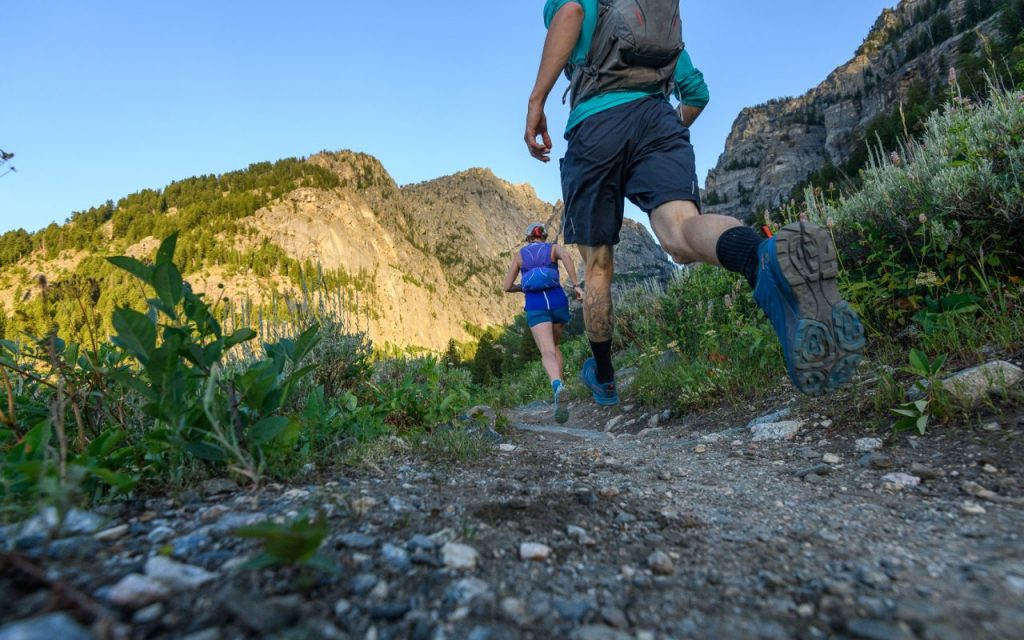
Trail Running Safety Tips
When you are trail running, there are a number of things to remember. This includes the following:
- If you’re unsure about where to run then it’s best that you do some research first. This might include looking at the trails online or asking for advice from someone who has already been before. It is also important to make sure that your phone is fully charged and with you during every trial running session so that if something goes wrong, you’ll be able to call for help.
- Always have a first aid kit on you. This is especially important if you are going out by yourself or with someone who isn’t familiar with the area. If something unexpected happens, then it’s best to be prepared for anything and everything that might come up from an injury all the way to being lost in the woods overnight.
- If running at night then make sure that you are carrying some form of the light source with you so that other people can see where you are going and avoid collisions if they are out on the trails too.
- Make sure that you are wearing proper gear so that if anything unexpected happens, it will be prevented or at least lessened as much as possible. This includes good running shoes for your feet and also enough layers to keep yourself warm in case it starts raining or getting colder than expected during your run.
- If you’re not sure about the route then mark it as a waypoint on your GPS or phone. This will make sure that you can easily find where you need to go and also prevent you from getting lost in case something happens with either of these devices
- Do not run trails by yourself unless absolutely necessary. It’s always best to have someone there who knows the area and can provide you with some level of safety if anything unexpected were to happen.
- If possible, try not to leave the trail that you’re running on as this will help prevent any injuries from occurring due to tripping or falling down a hill by accident
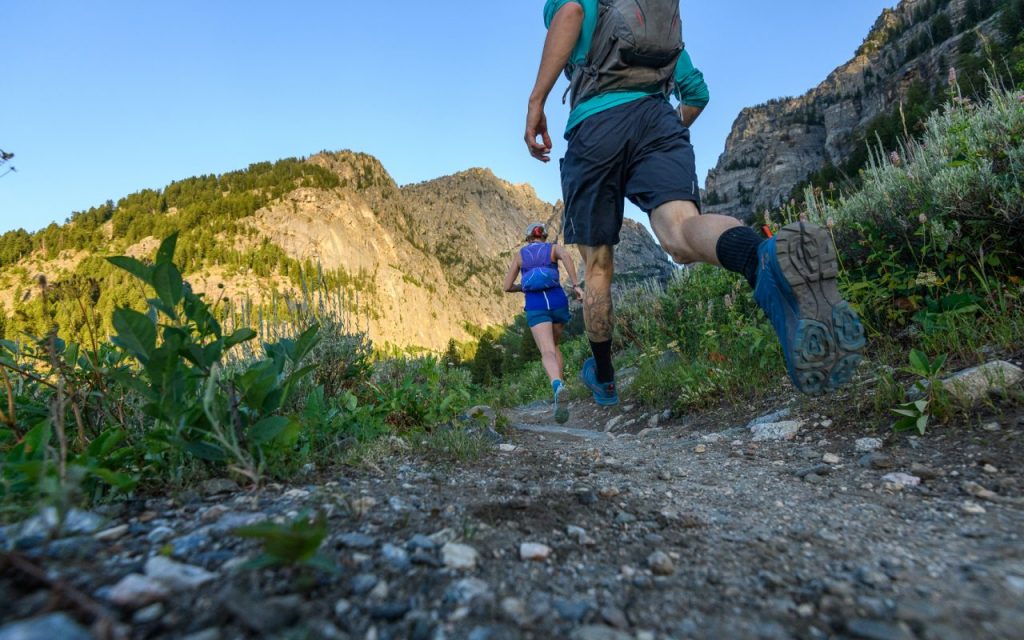
Join a Club
Organized trail races can be a fun way to test your skills against other people and the route. There are many different types of clubs that you can join, including but not limited to:
Hiking Trail Running Clubs – These groups typically meet up once or twice a month for an organized hike with members who have varying levels of experience depending on the group.
Trail Running Clubs – These meetups are usually smaller groups of people who are interested in running trails specifically. Some might be competitive while others will just enjoy spending time with like-minded runners and taking on the challenge together.
Running Clubs – These groups meet up on a weekly basis for organized runs and also provide their members with any special offers or discounts they might have at running stores in the area. They can be a great place to get involved if you’re looking to make some like-minded friends, learn more about trails around your local area, and even find some great running buddies
If you’re not sure about joining a club, then it’s best to first speak with someone who is already involved. This can be done by either asking your friends or family if they know anyone who might be interested in joining, checking out the local bulletin boards around town for any listings of upcoming meetings/events, and also checking out websites for local running groups.
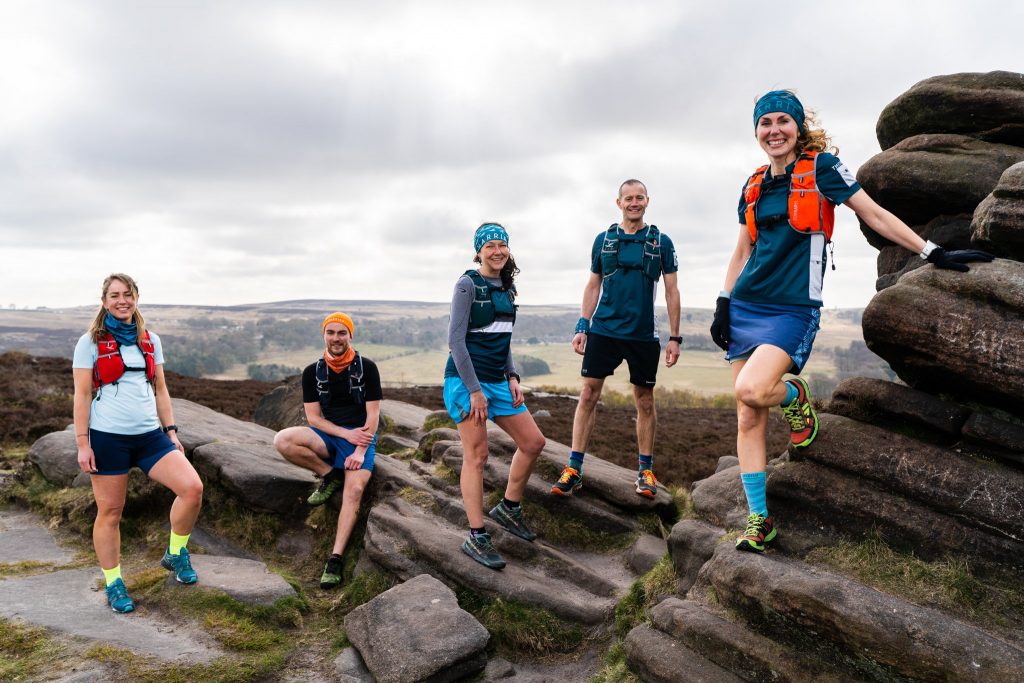
Checklist
- Research trails and areas to run.
- Make sure your phone is fully charged before you go out on a trail running session.
- Have a first aid kit with you at all times during trial runs.
- Wear proper gear for what type of weather/conditions there might be while running the trial route (sunscreen, rain jacket, etc.)
- Mark waypoints on your GPS or phone to ensure you can easily find where you need to go before you start.
- Make sure a friend knows the route and also what time you expect to be back before going out.
- Make sure you have plenty of water and snacks with you before going out for a trial run.
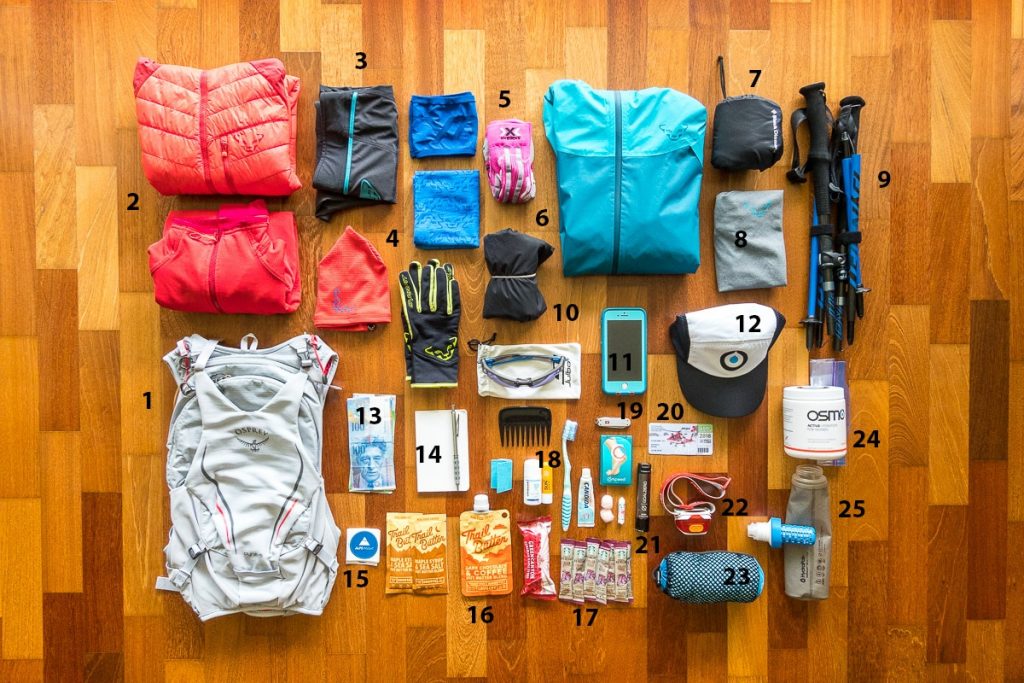
FAQ
Q. Do I need to be a runner to go trail running?
A. Trail running is great for beginners and those who would like to take up the sport of running as it will give you more endurance than just regular road runs which can be boring after a while. It’s also an amazing way to see parts of your local area that you might not have seen otherwise while getting a great workout during the process.
Q. How do I get started trail running?
A. Start by doing some research on trails in your area that are beginner-friendly and then go for an easy jog around one of these routes to see how you feel about it before trying out something more challenging or longer in length. Some trails might be suitable for beginners while others are best left to more experienced trail runners.
Q. What gear should I bring with me on my run?
A. There isn’t much specific gear that you need, but there are some general things that it’s helpful to have when trail running such as a first aid kit, extra food, and water, a phone fully charged, and with the GPS on in case you get lost, shoes that grip well to prevent injury from tripping/slipping, sunglasses for sunny days to protect your eyes against debris flying up at them while running.
Q. What is an ideal time of day to run trails?
A. This really depends on how experienced you are at running and what type of trails will be open during certain time periods. An ideal time for beginners to go out on the trail is usually early in the morning or late evening as there won’t be many other people around and it’s also not too hot/cold.
Q: Is it better to run with someone else?
A: It’s always a good idea to have someone else with you on trails as it can be dangerous if something happens and there is no one around. They could also help spot an animal before it comes too close or any other potential hazards that may arise from running alone in the wilderness.
Conclusion
Trail running offers a great way to get outside, enjoy nature, challenge yourself physically and mentally while getting an amazing workout. It’s important for beginners to do research about trails in their area before going out on them so they know what to expect during the run as well as how long it might take or if there are any other obstacles that may arise. Lastly, it’s always a good idea to have someone else with you on trails for safety reasons.

